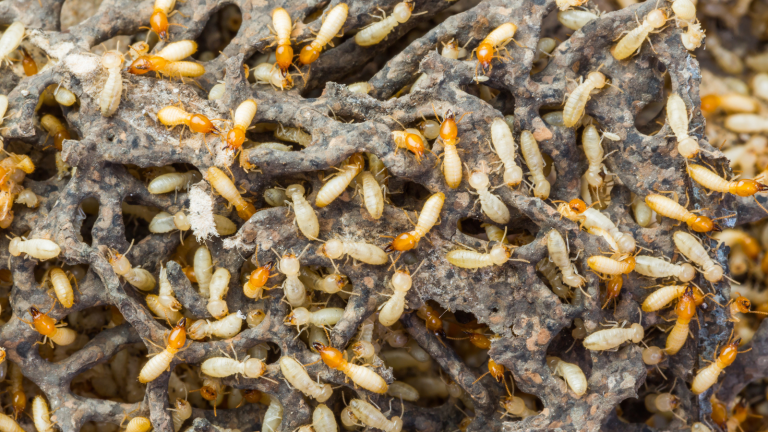Termites threaten homes and structures year-round, but their activity peaks during specific times of the year. Understanding the seasonal patterns of termites can help To safeguard their properties, homeowners take preventative measures. This blog post explores when termites are most active, the best times of year to address termite issues, and practical tips to prepare for termite season.
Here at Carlsbad Pest Control Company, pest control is more than a job—it’s our passion. Our dedicated team is committed to delivering top-notch customer service to homeowners and businesses alike. Have concerns about our services or specific pest issues? Give us a call today, and let’s begin the dialogue!
What Time Are Termites Most Active?
Termites are most active during the warmer months, typically spring through summer. However, their activity is influenced by several factors, including temperature, humidity, and the type of termite.
For example:
Subterranean termites swarm during the daytime, especially after a warm rain.
Drywood termites are likelier to swarm in late summer to early fall, usually in the late afternoon or evening. Termites are generally less active during the colder months, as they require warmth to thrive. However, in heated buildings, they can remain active year-round.
What Time of Year Do Termites Appear, and for How Long?
Termite activity varies by region, but there are common patterns:
- Spring: This is the most common time for termites to swarm as they emerge to start new colonies. The local climate might affect the exact timing. but March to May is typically when you’ll see swarming activity.
- Summer: Termites remain active, especially in regions with high humidity. This is when they do most of their damage as they forage and expand their colonies.
- Fall: Activity starts to slow down, but termites remain active until temperatures drop significantly.
- Winter: In colder climates, termite activity decreases as they retreat deeper into the soil to survive the cold. In warmer climates or heated structures, they can remain active.
Termite Control Through The Seasons
Effective termite control requires year-round vigilance. Here’s a seasonal breakdown of control measures:
Spring: Inspect for signs of swarming and mud tubes. This is also a good time for professional inspections and treatments.
Summer: Continue monitoring for signs of activity. Ensure that your home is dry and well-ventilated to discourage termites.
Fall: Conduct a thorough inspection to catch any late-season activity. Repair any structural issues that could provide entry points for termites.
Winter: Use the slower termite activity to fortify your defenses. This is an ideal time to apply treatments that will be effective come spring.
What Month is Best to Spray for Termites?
The best time to spray for termites is typically in the early spring. Treating in March or April can help eliminate colonies before they become more active. This timing also helps prevent termites from swarming and establishing new colonies. However, immediate action is necessary to prevent damage if you notice signs of termites at any time of year.
5 Tips to Help You Prepare During Termite Season
1. Schedule a Professional Inspection: Early spring is the perfect time to inspect your home by a professional. They’re able to spot early indications of termite activity and suggest appropriate treatments.
2. Eliminate Moisture Sources: Termites are attracted to moisture. Fix leaks, ensure proper drainage, and use dehumidifiers in damp areas of your home.
3. Seal Entry Points: Inspect your home for fissures and openings in the walls, foundation, and roof. Seal these entry points to prevent termites from gaining access.
4. Maintain Your Yard: Keep mulch, woodpiles, and landscaping materials away from your home’s foundation. Trim back vegetation and ensure good ventilation around the base of your home.
5. Use Preventative Treatments: Consider applying preventative termite treatments, such as soil treatments or bait stations, around your home’s perimeter.
Conclusion
Understanding the seasonal patterns of termite activity can significantly enhance your ability to protect your home from these destructive pests. By staying vigilant and implementing year-round control measures, You can reduce the possibility of termite damage. Spring is particularly crucial for inspections and treatments, but maintaining your defenses throughout the year is essential. By following these tips and taking proactive steps, you can safeguard your home against the costly damage termites can cause.
As usual, prevention is preferable to treatment when it comes to termite control. Stay ahead of seasonal termite activity and enjoy peace of mind knowing your home is protected.

